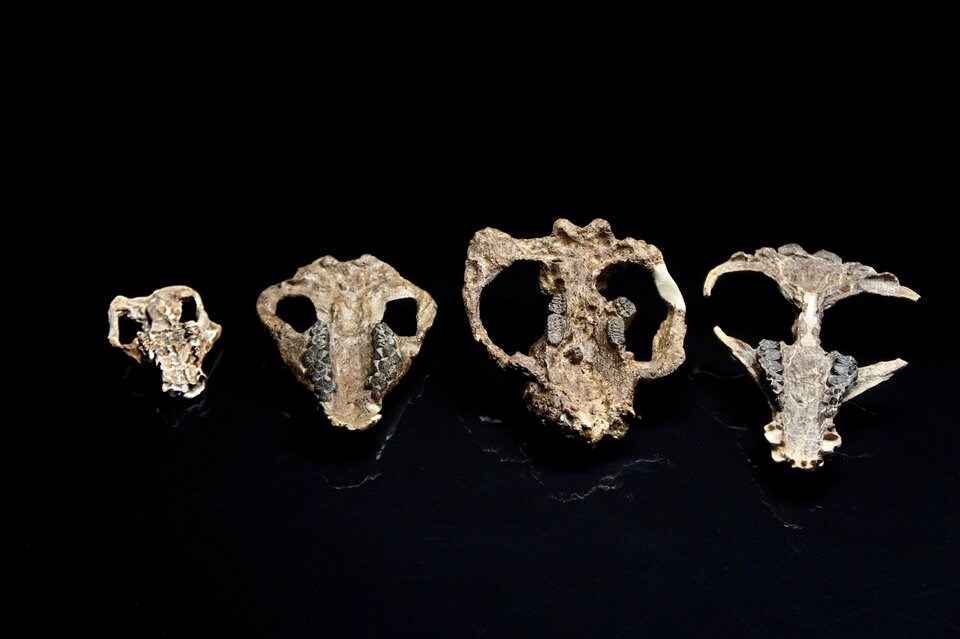Roughly 66 million years ago, a 10-kilometre-wide asteroid slammed into Mexico's Yucatan Peninsula.
The impact vaulted a massive plume of vapour, dust and ash into the atmosphere. As it circled Earth, those particles blocked out the sun. Plants struggled to photosynthesize, and one-by-one up the food chain, life started to collapse.
Millions of years of evolution had given rise to the dinosaurs, and in an instant, their dominance was wiped out along with 75 per cent of all species on the planet in what University of British Columbia geo-chemist Kendra Chritz describes as being like a “nuclear winter.”
At sea, the impact launched massive tsunamis across the globe, and according to one 2019 , led to a shock acidification of the ocean. On land, small, insect-eating, often nocturnal mammals had lived underground to avoid the jaws of predators. But with the dinosaurs gone, Chritz says mammals finally had an opening.
“We see different body sizes are emerging on the landscape and we see expansions in brain size,” she said. “It allowed ultimately for the evolution of primates, and then the evolution of our species.”
“I don't think that really would have been possible unless this extinction event had occurred.”
Remnants of the Chixculub crater can still be found spanning 180 kilometres. But Chritz says the story of life’s resurgence after the extinction event is still blurry.
That could soon change. Over the next five years and backed by nearly US$3-million from the U.S. National Science Foundation, the sa国际传媒 scientist will help lead a 10-person team exploring a trove of fossils in the foothills of the Rocky Mountains. If successful, Chritz says, they could start painting a picture of how life on land bounced back from near extinction.
Evolutionary timeline emerges one mammal at a time
Species by species, recent fossil discoveries from the post-impact period have started to build the bones of an evolutionary timeline. Much of that comes from Corral Bluffs, an outcrop in the Denver Basin east of Colorado Springs that offers a fossil treasure trove over a million years after the asteroid's impact.
In 2019, researchers at the Denver Museum of Nature and Science published a describing the fossils of at least 16 mammal species found at the site. Before the asteroid hit, few had grown larger than half a kilogram. But within 100,000 years, the fossil record at Corral Bluffs showed body size had exploded 13-fold, some growing to the size of a raccoon. Another 200,000 years after that, “the largest mammals had again tripled in weight, to about 45 pounds,” the lead author told National Geographic at the time.
Chritz says the site shows how the asteroid may have supercharged evolution for the mammals that survived. But the bigger picture of how they lived together remains a mystery, she says. That’s where her expertise comes in.
Teeth could hold secrets of a wider ecosystem
Some of the paleontologists on the project will dig through archived fossil records at the Denver Museum. Others, including Chritz, are headed back to Corral Bluffs to hunt for more fossils.
Chritz says she plans to return to her lab at UBC with any new discoveries, where she will chemically analyze fossilized teeth in an attempt to reconstruct what the ancient mammals ate. The idea is to start painting a picture — not just of one species’s evolutionary path, but the trajectory of entire terrestrial ecosystems.
“This happened in a single day, and so geologically, it is instantaneous. So it's really interesting to learn how the planet can recover from something like that,” said Chritz. “Who was the top predator in this environment? Who were the herbivores?”
While the research is ostensibly about recreating an ancient timeline of life on Earth, Chritz says what they learn will also hold lessons for a world once again coping with a rapidly shifting climate — this time brought on by humans.
“We're entering another mass extinction event. Geologically, it’s almost as instantaneous as this asteroid hitting the planet,” she said. “It’s interesting to know that if an extinction event happens that's as cataclysmic as this, how long does it take for the Earth to actually recover?”
As Chritz regularly puts it to her students: “The Earth is going to be OK. The question is really about us.”


